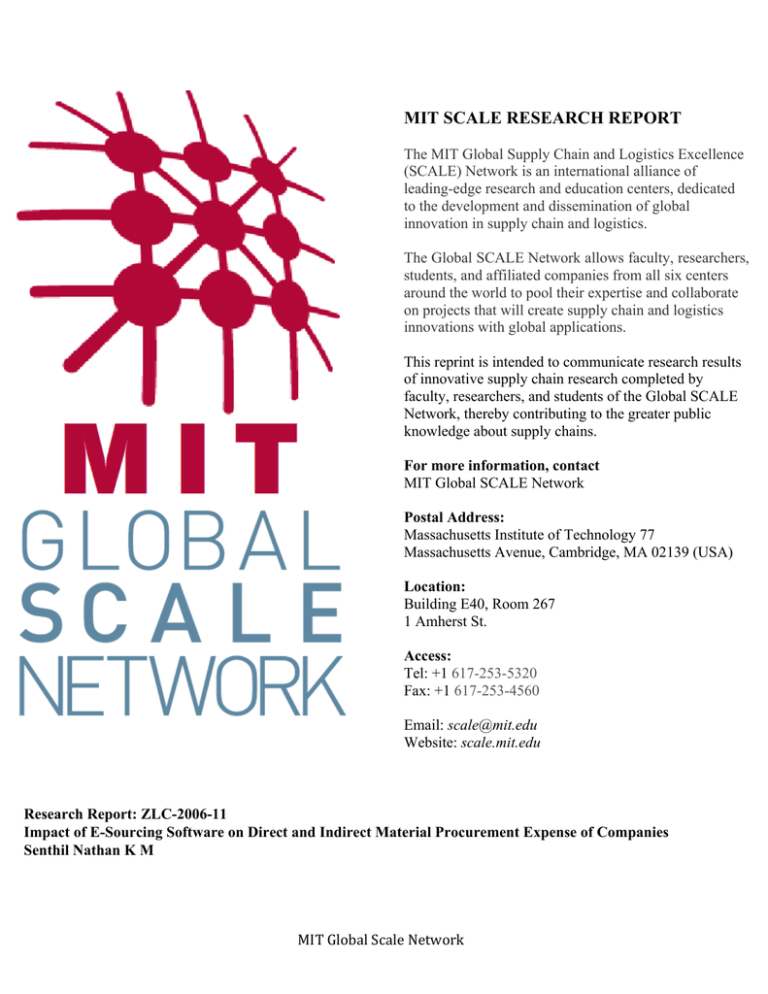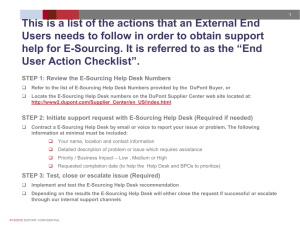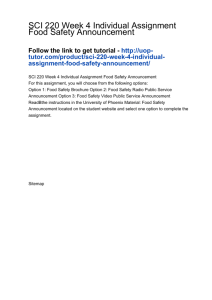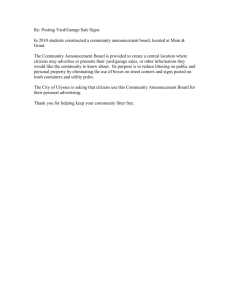MIT SCALE RESEARCH REPORT
advertisement

MIT SCALE RESEARCH REPORT The MIT Global Supply Chain and Logistics Excellence (SCALE) Network is an international alliance of leading-edge research and education centers, dedicated to the development and dissemination of global innovation in supply chain and logistics. The Global SCALE Network allows faculty, researchers, students, and affiliated companies from all six centers around the world to pool their expertise and collaborate on projects that will create supply chain and logistics innovations with global applications. This reprint is intended to communicate research results of innovative supply chain research completed by faculty, researchers, and students of the Global SCALE Network, thereby contributing to the greater public knowledge about supply chains. For more information, contact MIT Global SCALE Network Postal Address: Massachusetts Institute of Technology 77 Massachusetts Avenue, Cambridge, MA 02139 (USA) Location: Building E40, Room 267 1 Amherst St. Access: Tel: +1 617-253-5320 Fax: +1 617-253-4560 Email: scale@mit.edu Website: scale.mit.edu Research Report: ZLC-2006-11 Impact of E-Sourcing Software on Direct and Indirect Material Procurement Expense of Companies Senthil Nathan K M MITGlobalScaleNetwork For Full Thesis Version Please Contact: Marta Romero ZLOG Director Zaragoza Logistics Center (ZLC) Edificio Náyade 5, C/Bari 55 – PLAZA 50197 Zaragoza, SPAIN Email: mromero@zlc.edu.es Telephone: +34 976 077 605 MITGlobalScaleNetwork ________________________________________________________ Impact of E-Sourcing Software on Direct and Indirect Material Procurement Expense of Companies. Senthil Nathan K M EXECUTIVE SUMMARY ________________________________________________________ The importance of material supplies to keep the business running, especially in material flow intensive industries like manufacturing and retailing can not be over emphasized. With a large share of budget going towards the purchase of materials for direct and indirect use in the final product, supply management professionals have always scrutinized the purchasing department for cost savings. Now having plucked all the low hanging savings from the purchasing and supply management process, professionals look beyond traditional methods for advanced cost saving techniques. Executives have also been inadvertently adding complexity to supply management by extending the list of suppliers and supplies to meet the needs of growing business and increasing product complexity. Now industry professionals are exploring techniques beyond traditional methods to tackle the challenges of complexity and continue with the tradition of continuous cost reduction. Software vendors have developed a new line of software tools called e-sourcing suites to solve the challenges in supply management. Many early adaptors have already implemented these e-sourcing suites to reduce cost. Some potential users are still waiting and watching to see some solid numbers for return on investment. We studied a sample of customers using some of these e-sourcing suites from nine leading e-sourcing software vendors to discover if there were any patterns of change in procurement cost post implementation of e-sourcing suite. Details about the study as well as the findings are discussed here. Objective of this study is to find any significant decrease in direct and indirect material procurement expense for the period after announcement of e-sourcing projects. We selected 9 different e-sourcing software vendors and 49 different e-sourcing solution users for Executive Summary, MIT-Zaragoza Master’s Thesis, 2006 1 our study. Average of cost of goods sold relative to sales (COGS/Sales) and average of selling and general administration expense relative to sales (SGA/Sales) are used as proxy indicators for direct and indirect material procurement respectively. By comparing these ratios for each user company for the periods before and after project announcement, we explored any decrease in direct and indirect material procurement expense for the period post project announcement. Neither did the average of COGS/Sales ratio nor did the average of SGA/Sales ratio change significantly for the period post project announcement. Based on the data out statistical tests state that: There is no statistically significant (p = 0.121) change in direct material procurement expense for the period after the e-sourcing project announcement. There is no statistically significant change (p = 0.246) in indirect material procurement for the period after the e-sourcing project announcement. We repeated the test for direct material expenses (COGS/Sales ratio) for a period one year after the project announcement. Since a typical IT project would approximately take one year to reach the stage of user acceptance, we expected this test to reveal if there were any savings accrued after a delay period of one year. Again we did not find a significant difference in the mean of COGS/Sales ratio even with a one-year lag after the project announcement. From this analysis we can state that There is no statistically significant (p = 0.126) change in direct material procurement expense for the period one year hence the e-sourcing project announcement. E-Sourcing software tools are relatively new and rapidly evolving. Mergers among the e-sourcing vendors in the recent past have very often resulted in more features and functions for the end users. Perhaps the savings realized in the early days are canceling out the initial expense due to learning curve. We may have to do a more detailed study after few years and with a larger sample of user companies to find out if savings are accruing after a significant lag or if they are more pronounced in some industries as compared to the other. Executive Summary, MIT-Zaragoza Master’s Thesis, 2006 2







